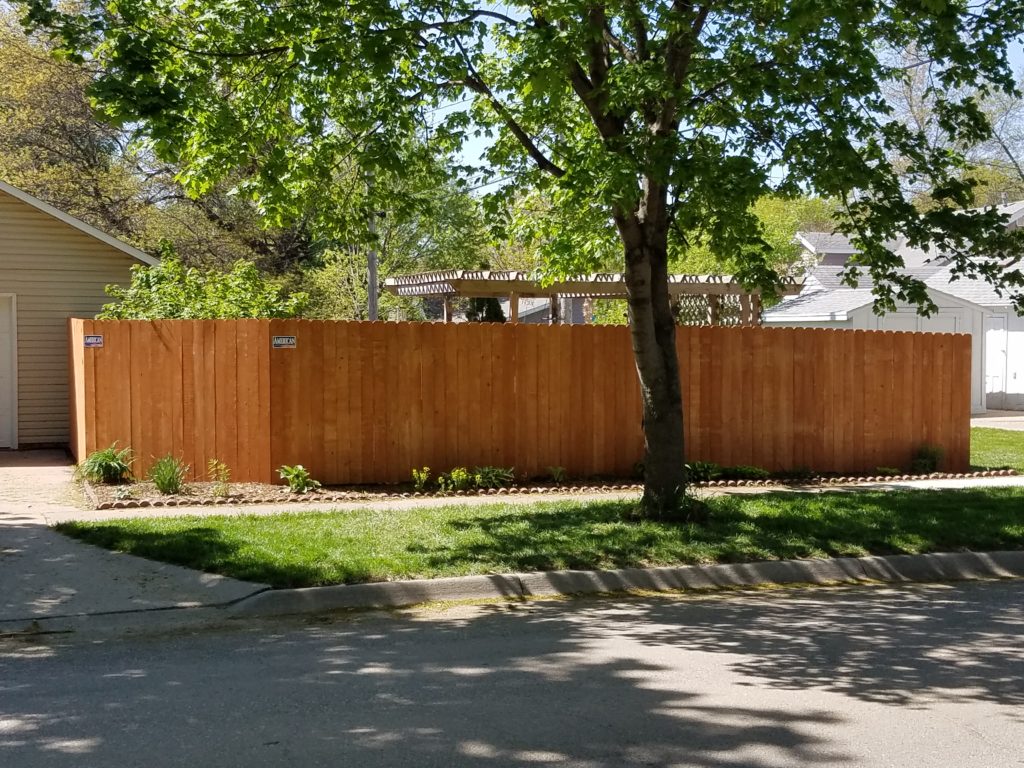The Death of Real Cedar Fencing
When I was a boy I use to work summers at my father’s fence company. Back then, cedar fence boards were rich with dark red, brown and orange hues. The boards had a strong cedar smell that was so pungent that you might have thought you were locked in your grandmother’s cedar closet. Back then, cedar fencing came from old growth cedar trees. When the trees were harvested; the trunks were as big around as Volkswagens, mostly comprised of heart wood with a few outer sapwood rings.
These outer, lighter colored rings, sapwood, are the “working” part of the tree, as water and sap will flow through the sapwood much like blood through your arteries, veins and capillaries. While this part of the trunk is vital to the tree when it is living, it doesn’t make for very good stock for fencing and exterior applications. Sapwood contains a lot of moisture, will shrink considerably when dried, and is much more susceptible to fungus.
The inner, darker section of the trunk is the heartwood. Heartwood is formed from old, “retired” sapwood, and becomes the strong spine of the tree. Heartwood is preferred for fencing, as it is far less susceptible to fungus and doesn’t contain nearly as much moisture as sapwood, which means it will shrink less when dried. Many mills that specialize in cedar decorative exterior cedar posts and beams will actually remove the sapwood and use only heartwood.
Once the tree has “promoted” some of it’s sapwood to heartwood status, the sap will stop flowing through that part of the wood and the converting material essentially dies. As part of the conversion process, the pores will begin to plug up with organic matter which causes the cell walls to change color due to the presence of chemicals called extractives. The extractives are responsible for the rich character, odor and colors found in heartwoods.
Due to the limited amount of old growth cedar trees and tight restrictions on forestry throughout the United States and Canada, most of today’s cedar is new growth. This new growth is from a species of cedar that grows quickly and establishes very little heartwood. Furthermore, the trees are much smaller when harvested only compounding the lack of the dark inner rings. Today’s cedar fencing is almost entirely harvested from sapwood.
Today’s Cedar fencing from sapwood cannot hold-up to its reputation as the preferred choice for longevity in exterior applications as its lifespan is considerably shorter compared to yesterday’s heartwood cedar fencing. However, there are options. With the restrictions and limitations on harvesting old growth cedar, the wood industry has moved on to less popular but abundant species such as Douglas Fir, White Fir and Incense Cedar.
These species are in great abundance in older growth trees, providing more options for fencing boards. Because these species like Douglas Fir are being harvested from heartwood; these are proving to outperform the cedar in exterior above ground applications such as fencing. Though you may not enjoy that rich cedar smell; you will get several years of longevity from these species. Besides, after a while, the smell of cedar is just too much to handle.
